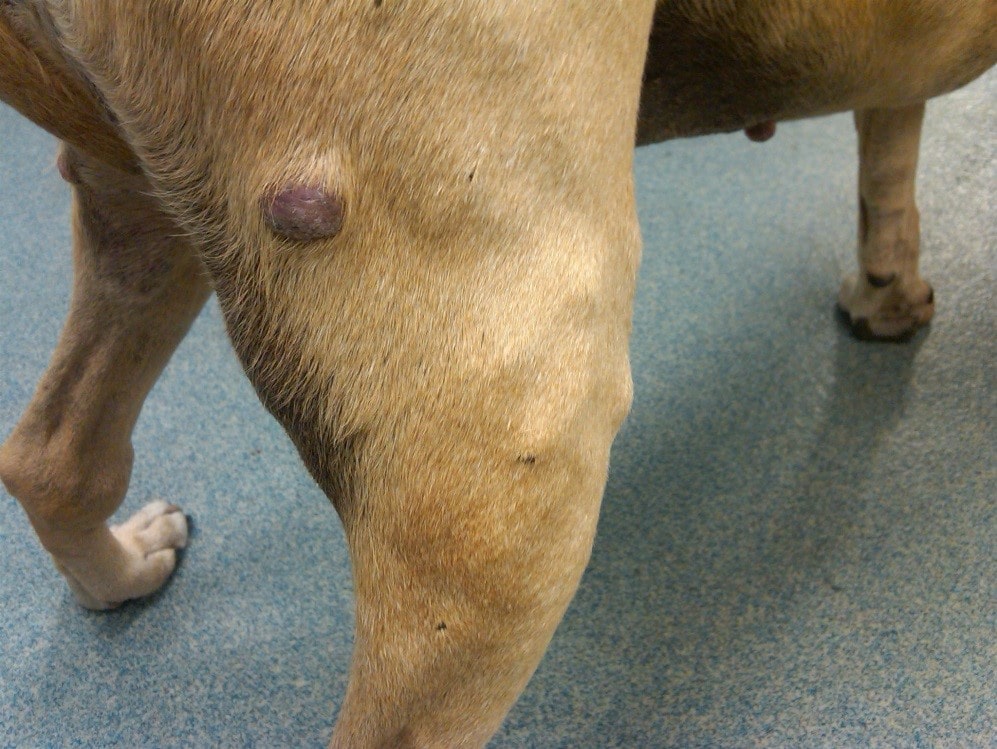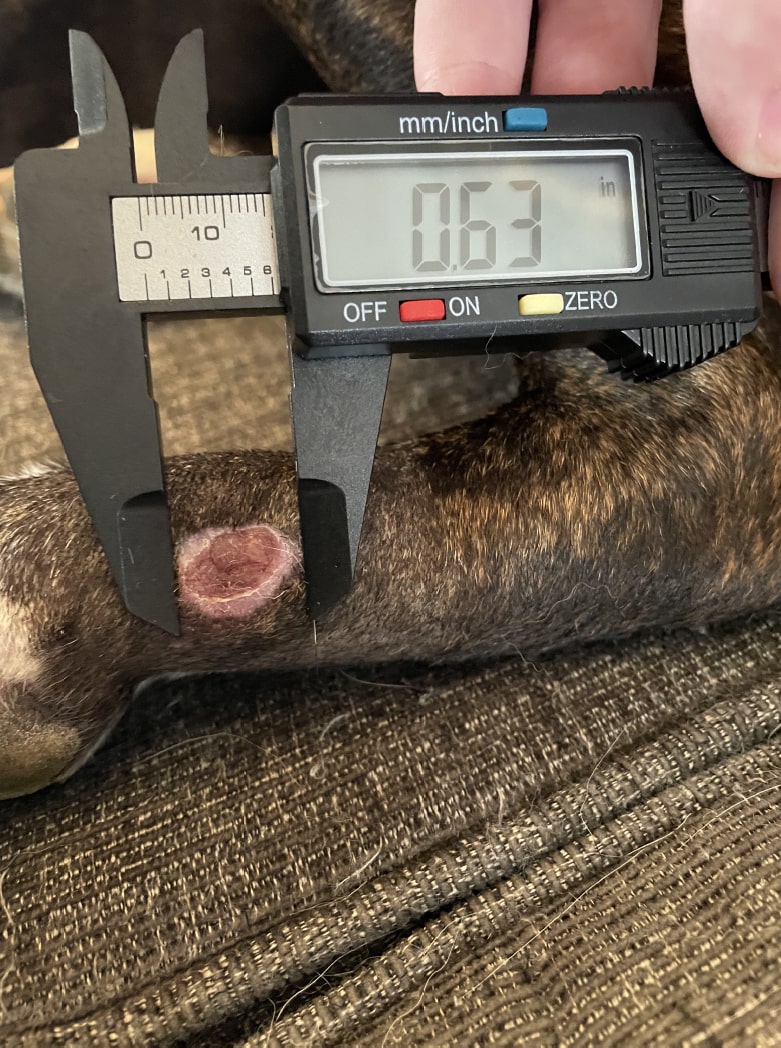Cutaneous Mast Cell Tumors
Mast cell tumors are the third most common malignant skin tumors in dogs. There is no know breed or sex predisposition and they are more common in adult to older animals. Mast cell tumors are variable in dogs but generally more well defined tumors present with milder behavior and the poorly differentiated tumors have more aggressive behavior. The most common organs affected by spread of disease are the lymph nodes, spleen, skin, and liver. Mast cell tumors are commonly term the great pretender as they can look like so many different masses. The can be on the skin, under the skin, covered in hair, have no hair, be soft or firm, etc, etc. There is not a standard which is why it is important that any mass that is found be evaluated.
Historically surgery was the only option available to treat mast cell tumors. Surgery is still considered the gold standard of treatment as it allows for staging and prognosis of the tumor. However, since mast cell tumors can grow anywhere surgery is sometimes difficult (think toes, ears, distal limbs, etc). An additional complication is that these types of tumors like to grow roots like trees so a large amount of tissue around and below these masses need to be removed. This sometimes makes surgical removal impossible.

Introducing Stelfonta (tigilanol tiglate injection)! This is an injectable drug that causes necrosis (death of tissue) of 87% of mast cell tumors in 1-2 injections. This is perfect for dogs that are at increased risk of anesthesia or tumors that are in locations where obtaining surgical margins would be difficult (distal limbs).
The other nice thing about stelfonta is that dogs do not need to wear an e-collar or be on exercise restriction! They can lick it….it seems gross and wrong since veterinarians tell clients all the time that wounds should not be licked! It can be a little scary as the tumor continues to die and creates a wound that needs time to heal.
Dog with Great Response to Stelfonta

2 days post injection

20 days post injection

30 days post injection

6 weeks post injection

 Barks & Recreation is proud to feature Dr. Eileen Savier CVA, CVCH as our Veterinary Blogger in our “From the Vet” Series — offering information related to the health and welfare of your furry family members! Currently part of the team of doctors at Keystone Veterinary Clinic, Dr. Savier is a 2012 Graduate of the Ross University School of Veterinary Medicine, She completed her clinical experience at The Ohio State University and after veterinary school she pursued further education and certification in Veterinary Acupuncture, Chinese Herbal Medicine, and Fear Free veterinary visits. Dr. Savier has a special interest in integrative medicine, animal behavior, and internal medicine and is committed to improving animal health care by integrating Eastern and Western philosophies. She enjoys working with fearful & aggressive dogs and cats and she has had additional training in low stress handling techniques and encourages positive reinforcement during exams and procedures. Her clinical interests include pain management, animal behavior, geriatric patient care, and internal medicine.
Barks & Recreation is proud to feature Dr. Eileen Savier CVA, CVCH as our Veterinary Blogger in our “From the Vet” Series — offering information related to the health and welfare of your furry family members! Currently part of the team of doctors at Keystone Veterinary Clinic, Dr. Savier is a 2012 Graduate of the Ross University School of Veterinary Medicine, She completed her clinical experience at The Ohio State University and after veterinary school she pursued further education and certification in Veterinary Acupuncture, Chinese Herbal Medicine, and Fear Free veterinary visits. Dr. Savier has a special interest in integrative medicine, animal behavior, and internal medicine and is committed to improving animal health care by integrating Eastern and Western philosophies. She enjoys working with fearful & aggressive dogs and cats and she has had additional training in low stress handling techniques and encourages positive reinforcement during exams and procedures. Her clinical interests include pain management, animal behavior, geriatric patient care, and internal medicine. Dr. Savier shares her home with two (soon to be three) dogs, two cats, and a toddler. She lovingly refers to her two dogs as Coconut Retrievers as they were rescue dogs she brought home from the island of St. Kitts. In her free time she enjoys spending time with her family, going to the beach, and planning her next Disney vacation.
Dr. Savier shares her home with two (soon to be three) dogs, two cats, and a toddler. She lovingly refers to her two dogs as Coconut Retrievers as they were rescue dogs she brought home from the island of St. Kitts. In her free time she enjoys spending time with her family, going to the beach, and planning her next Disney vacation.




